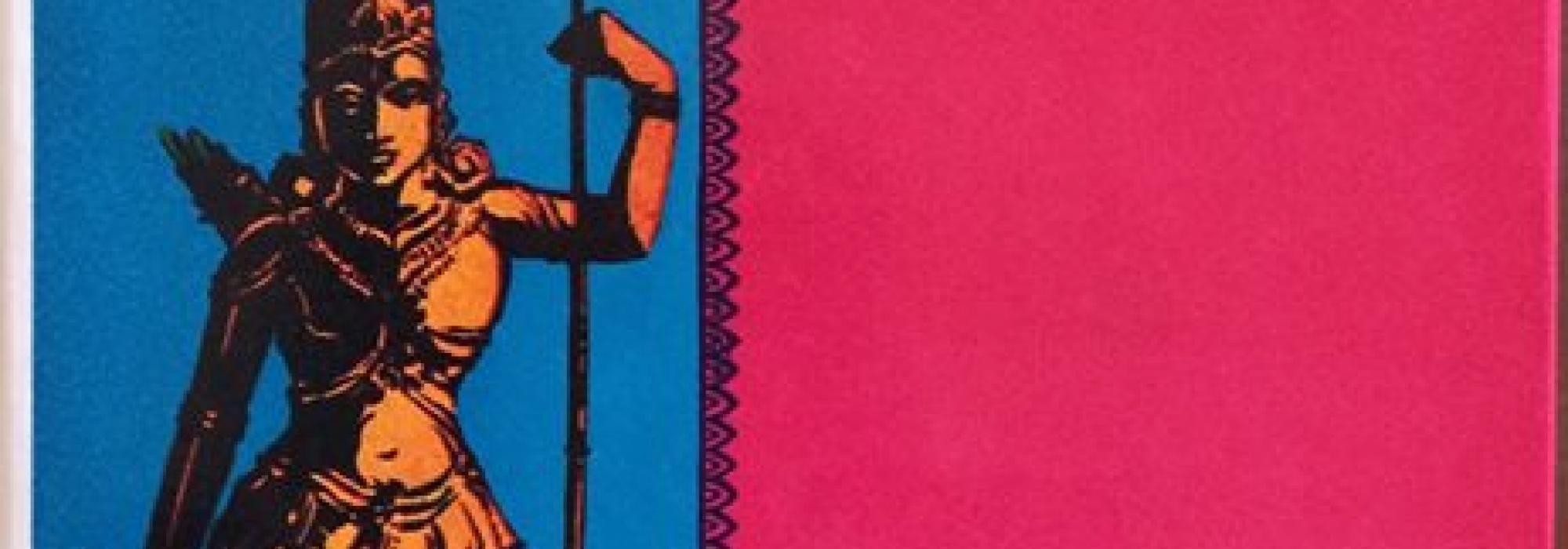Passion for Rāmāyaṇa
I have mentioned earlier that VS Srinivasa Sastri’s love and devotion for the Rāmāyaṇa was something he inherited from his forefathers. During one of his long stays in Bangalore, his close friend M. Venkataranga Rao, a native of the Andhra region, happened to visit him. One evening, Srinivasa Sastri, his friend Venkataranga Rao and I set out towards the Nandi Hills in a car. I am going to narrate an incident that took place in this short trip –
Venkataranga Rao
Venkataranga Rao was one of the scholars who had a keen interest in the well-being of the Nation. He had mastered both Sanskrit and English literature. There were a few others like him – Prof. L. Sundararama Iyer, Prof. Malur Rangacharya, Prof. Vaidyanatha Iyer, Prof. K.B. Ramanatha Iyer and Prof. Lakshminarasu (who was a scholar of Buddhism). These men often met to discuss about the prevailing system of education and social conditions in the country.
There were two sub-groups in this team of people who concerned themselves with social welfare
- Rational – This group was for logical examination of things and argued that the society had to be sculpted based on sound reasoning
- National – This group argued that traditional methods had to be employed in shaping the society. In their view, regional and traditional approach were not to be given up completely and it was not pertinent to take refuge only in rationalism.
Among these, Sundararama Iyer, Rangacharya and Venkataranga Rao were of the opinion that the society had to be structured as a function of the traditional practises of the region. They, thus, belonged to the ‘National’ group.
Venkataranga Rao was the supervisor of the Land Holders’ Association in Madras. The association consisted of land owners of the region and Venkataranga Rao himself possessed some expanse of agricultural land. He had studied literature solely for the sake of knowledge and for culturing his own self. He had obtained an MA degree too. He had gone through several profound works of Andhra Pradesh and was a scholar of the Purāṇa-s in Sanskrit. Venkataranga Rao was sincere and simple in his conduct and humble by nature. He was one of Srinivasa Sastri’s favourite friends.
Whitley Commission
On the day that we headed towards the Nandi Hills, as Srinivasa Sastri and Venkataranga Rao travelled in the car, a conversation ensued between them. Back then, Sastri was a member of the Whitley Commission. The task of the Commission was almost complete and it was time to prepare a report. The Commission was endowed with the responsibility of examining the means by which the gap between the employers and the labourers in different offices and industries could be reduced. It was to inspect the problems that existed in the labour force at different levels and was to propose solutions. The Commission was also expected to come up with means of bringing an amicable working atmosphere and to develop harmony between the employers and the employees. These were to be analysed from all different angles and suggestions were to be proposed. A person by name Whitley, a native of England supposedly had great experience in handling such matters. I have heard that the councils he had established under the name ‘Whitley Council’ function to this day in England and have helped their country in a big way. The Whitley Commission in India was to check if such measures could be taken in our country too and if effective suggestions could be provided. As a part of its work, the commission travelled around the country and gathered people’s opinion in this regard. It was during these tours that Sastri’s physical health took a bad turn.
An Episode from the Rāmāyaṇa
That evening as we were traveling in the car, a certain episode from the Rāmāyaṇa was brought up for discussion and this enthused Sastri to participate actively. We stopped the car at a place after crossing Devanahalli. Sastri was lost in his thoughts mulling over some episode from the Rāmāyaṇa. He was describing how different poets have pictured the same episode. He picked instances as described by the poets of Jānakīpariṇaya, Anargharāghava, Hanūmannāṭaka and also by Kālidāsa and Kamban. He quoted sections from their works and almost delivered a lecture to us. There is a certain segment that has remained for ever in my memory.
Śrī Rāmacandra returns to Ayodhya with Sītā and Lakṣmaṇa in the Puṣpakavimāna. On their flight back, Rāma tries to recollect the places he had wandered about looking for Sītā and points them to her. As they approach Daṇḍakāraṇya, Rāma seems to be unable to recall the events that took place there. He tries to identify the place. This situation is described by Bhavabhūti in the following manner:
पुरा यत्र स्रोतः पुलिनमधुना तत्र सरितां
विपर्यासं यातो घनविरलभावः क्षितिरुहाम् ।
बहोर्दृष्टं कालादपरमिव मन्ये वनमिदं
निवेशः शैलानां तदिदमिति बुद्धिं द्रढयति ॥purā yatra srotaḥ pulinamadhunā tatra saritāṃ
viparyāsaṃ yāto ghanaviralabhāvaḥ kṣitiruhām ।
bahordṛṣṭaṃ kālādaparamiva manye vanamidaṃ
niveśaḥ śailānāṃ tadidamiti buddhiṃ draḍhayati ॥
“This place, where a river flowed in the past is now filled with sand and is turned into a desert. The river too seems to have changed its course and has taken to a different path. The thick forests with lots of trees have now disappeared. The land which was empty in the past is now full of plants and trees. It seems like a lot of time has elapsed since we left the place. I am, thus, unable to recognise the place and it appears like a totally different spot. The mountains, nevertheless, have held their positions as if to confirm the location to us. We can identify the place by looking at these immovables”
He quoted this poem and started rendering a commentary on it in Sanskrit. He said that the poem contains a figure of speech called the 'arthāntaranyāsa-alaṅkāra'. “गुणवद्वस्तुसंसर्गात् याति नीचोऽपि गौरवं।” etc
The Current Context
After his long exposition on the subject, Sastri remarked – “This is what today’s India will need to keep in mind. A land which is full of opportunists and selfish men, will never prosper. Water, forests and land may get displaced but the mountains stand still and guide us. A country which has people who will stand as embodiments of a principle will thrive and will attain higher levels of prosperity. It is with this in mind that Vālmīki has remarked – ‘dhairyeṇa himavāniva’
We need to live for a principle. If we just move as the wind sways and don’t hold on to our commitment to a tattva, our character goes for a toss. We will be fooling ourselves and our life gets corrupt. In our country today, is there any one else other than Gandhi who can confidently claim to be ‘ Niveshah shailaanaam;, i.e., constant and steadfast like the mountains?’
It was getting dark by the time Sastri finished speaking on this subject. His voice and lung capacity had terribly gone down. Venkataranga Rao insisted that we end the conversation there.
Three to four days after this incident, Venkataranga Rao and I picked up an issue with him.
V: Sastri-ji! What are you up to! The explanation that you gave us yesterday should reach an assembly of thousand men. Shouldn’t our people enjoy your scholarship at poetry and the delineation of literary aesthetics that you so wonderfully do?
Me: Just as Gilbert Murry has given an extensive commentary and has critically analysed Greek poetry, the occasion is now yours to do the same with the works of Indian poets. The Divine has ordained it upon you. Unless Indian Poetry and Plays are provided with such creative analysis, it will not win the attention of the global audience.
Sastri saw merit in our words. He said: “All my energy and mental space is focused here. I find happiness in teaching literature, especially Sanskrit poetry. I would be happy if I am allowed to do just that. Who wants this Whitley Commission and all this unnecessary work? I have had enough of politics. I will consider myself blessed if I am left alone to enjoy the company of the masters of the bygone era. What should I do?
Srinivasa Sastri’s father, Shankaranarayana Sastri was famous for his lectures on the Rāmāyaṇa. One could say that Sastri’s love for the Epic had come down to him like family wealth.
Sastri had several friends who argued that his natural inclination and passion was for classical literature and he should stop working in the dry arena of the politics. They observed that he had a natural flare for working in the field of literature and they insisted that he take up the task of analysing the Rāmāyaṇa. I was one among his friends who wished that he did so. I time and again told him that he had the knack of bringing ancient works to the modern world in his own style and in an impactful manner. Whenever I said this, he remarked – “I have not even read the Rāmāyaṇa properly (‘Shemmeyaa’). I would consider his remark an excuse!
To be continued...
This is the eighth part of the English translation of the Second essay in D V Gundappa’s magnum-opus Jnapakachitrashaale (Volume 6) – Halavaru Saarvajanikaru.







































